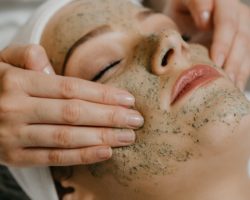A beautiful smile and healthy white teeth are an accessory that will never go out of style. However, it is difficult to preserve white enamel and indulge in nothing: morning coffee, delicious bright food, wine and other guilty pleasures invariably affect the shade of the teeth. The way out is professional whitening. But in order to approach the procedure wisely, you should know in advance about some points. Femme4 asked the experts of the topical questions about whitening.
1) How to prepare for teeth whitening?
Advertising of any whitening system speaks about the safety, painlessness, speed, efficiency and affordability of the procedure, but they do not pay attention to proper preparation for teeth whitening.
Regardless of which whitening system you choose, the right preparation can:
- ensure the safety of teeth enamel whitening;
- reduce the risk of pain during and after the procedure;
- give maximum whitening effect.
The better the condition of your teeth, the less time and money will be taken from you preparing for whitening, so if you have dreamed of a snow-white smile all your life, do not rush. To get started, go through the entire set of preparatory procedures to be sure of the health of your oral cavity.
What steps must be taken before teeth whitening:
- Consultation with a general practitioner;
- Treatment of caries and relief of all inflammatory processes in the oral cavity, if any;
- Professional dental hygiene to remove plaque and gum inflammation;
- A course of remotherapy to strengthen the enamel and reduce its sensitivity;
- Selection of a whitening system;
- Eating immediately before the procedure, since it is not recommended to eat for 2-3 hours after it.
2) What is the most progressive whitening method today?
In my practice, I have used all generations of the manufacturer of whitening systems Zoom, but the latest generation of Zoom 4 WhiteSpeed turned out to be the most effective in several parameters.
The activation of the whitening agent (gel) occurs due to the cold flow of blue light from LEDs, while the surface of the teeth does not heat up, which, in turn, does not have a traumatic effect on the pulp (neurovascular bundle) and does not lead to overdrying of the enamel.
The high intensity of the light flux allows the whitening procedure to be carried out in 1 hour (excluding the preparation time ~ 50-60 minutes).
The clinical whitening kit contains components that prevent / reduce the possible appearance of tooth sensitivity due to the content of potassium nitrate and amorphous calcium phosphate in them, which activate the remineralization process, increasing the shine, strengthening the enamel and filling all microroughnesses.
This technique allows you to successfully cope with even the most seemingly color-resistant cases – “tetracycline teeth”, as well as with rough gray and dark yellow tones. “Tetracycline teeth” are the result of the use of tetracycline antibiotics in the first years of a child’s life, leading to a sharp discoloration of the enamel of the teeth, in which the upper half of the tooth is in the color range from bright yellow to dark gray, and the incisal edge is light transparent. Previously, this type of enamel discoloration was extremely difficult to change, but with the advent of modern bleaching methods, and, in particular, LED-diode whitening Zoom 4 WhiteSpeed, this became possible with obtaining beautiful and stable results, in which the difference in the color of the neck and incisal edge becomes practically invisible (subject to an additional course of home bleaching due to extremely persistent antibiotic pigments).
Also, with the help of this whitening system, we were able to correct and “level out” the color of the teeth in such non-carious enamel lesions as dental fluorosis (“speckled teeth”). It is worth noting that with such color changes, combined methods of treating discoloration using microabrasion and an additional home whitening procedure are used.
If the patient observes all the doctor’s recommendations, the teeth not only acquire a beautiful, bright color, but also become much more mineralized (strong) due to the inclusion of unique, powerful remineralizing complexes in the system.
3) Home whitening
Stripes
These systems are designed for a wide range of patients due to their greater availability (including financial). The use of whitening strips is quite effective and easy to use, there is no need to make individual aligners. The average course of treatment is 3 weeks, before which certain conditions are also required (undergoing professional hygienic cleaning, preliminary and subsequent remineralization therapy, including the use of pastes, gels, mousses containing effective bioavailable compounds of calcium, potassium, and, if necessary, fluorides). The teeth are dried with cotton rolls, discs, the strip separated from the matrix is first applied to the front surfaces, and then to the lingual surfaces of the teeth of the upper and lower jaw.
After applying the course of home whitening with strips, the color improves by an average of 3-5 shades on the Vita scale.
Whitening gels
This method of whitening involves the patient’s independent use of bleaching preparations containing low-concentration compounds of hydrogen peroxide and urea in trays made according to the patient’s individual impressions.
Nowadays, there is a large selection of home bleaching systems on the dental market. They all have a similar mechanism of operation, but with the possibility of choosing the percentage and composition of the gel individually for each patient and for a specific clinical case. Home whitening systems can be used even with increased tooth sensitivity.
When it comes to the difference between professional home systems and strips, my choice is clear – home professional systems. The most important aspect: the whitening takes place in individual trays made by the laboratory method, which allows you to minimize the bleaching of the bleaching composition, which, in turn, ensures that the gums are not burned, unlike standard whitening strips. And, of course, home tray whitening takes place under the supervision of a doctor, the initial and final results are recorded using a photo protocol, the doctor supervises the patient at each stage of whitening. And, of course, clinics cooperate only with official representatives of companies that produce dental materials, the quality of which is beyond doubt.
4) To whom the whitening procedure is contraindicated for?
Despite the fact that teeth whitening is a cosmetic procedure and is done exclusively at will, it has contraindications.
Relative contraindications include:
- Caries, pulpitis, periodontitis;
- Chips, microcracks of enamel and wedge-shaped defects (exposed necks of teeth);
- Increased sensitivity of the teeth;
- Inflammatory processes in the oral mucosa and gums.
5) What result to expect after professional whitening?
Sometimes patients look at the teeth of their friends after whitening or in a photo on the Internet and think that they will have the same. But in fact it is very individual and depends on the transparency of the enamel and the color of the dentin – the main part of the tooth, which is located under the enamel.
Dentin, unlike enamel, is opaque and has a certain color – more gray or yellow. Enamel, on the other hand, is a transparent fabric that has a shade – warm or cold.
The whitening component penetrates deep into the enamel and dentin and breaks down the accumulated pigment from food, tea, coffee and cigarettes.
If the dentin itself is light, the result is very steep, the teeth become dazzling white. If the dentin has a sufficiently dense yellow tint, which shines through the enamel and gives the teeth an appropriate shade, after bleaching the teeth will become whiter, but within the limits of possible.
6) How to maintain the result?
So you’ve done your bleaching. Now, of course, I want the smile to remain snow-white as long as possible. If the procedure was carried out by professional methods in the dentist’s office, then on average the result will delight you for 3-4 years, but only on condition that you carry out high-quality oral hygiene and follow a number of rules:
- Minimise usage of drinks and foods that could stain your teeth;
- To give up smoking;
- The use of specialized products (individual trays that will be made for you after the procedure in the clinic, and a whitening gel for home use)
7) How often can the procedure be repeated?
The whitening procedure is recommended for aesthetic reasons and can be performed no more than once a year, provided that you do not have any hypersensitivity of your teeth.






